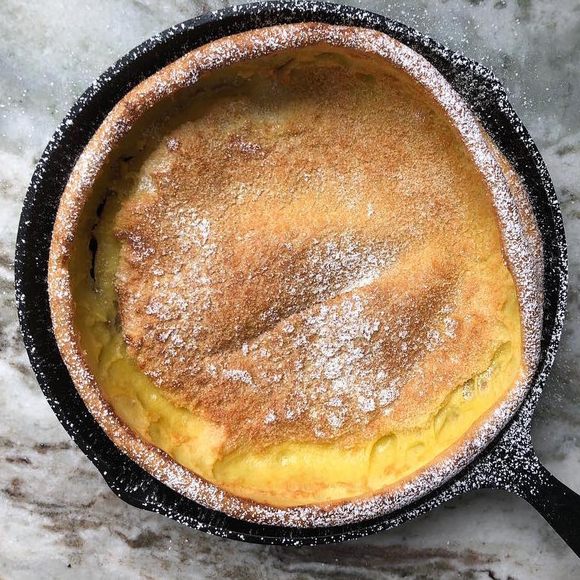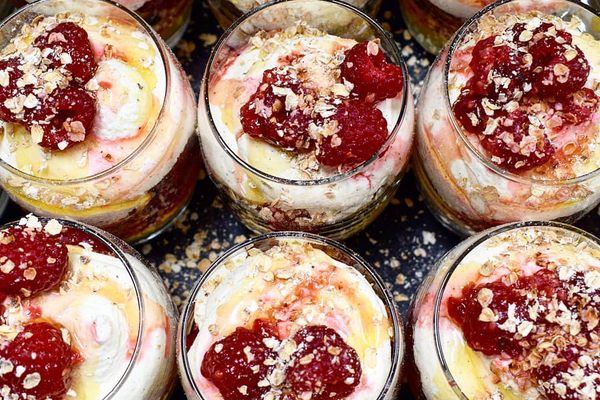As you assemble the basic ingredients of a Dutch baby, with its batter of eggs, flour, sugar, and milk, and its toppings of powdered sugar and fresh fruit, it’s easy to think that you’re making a pancake. But unlike its pan-cooked cousin, this breakfast treat gets baked in an iron skillet. The result is a soufflé-popover hybrid that quickly collapses into a fluffy pastry with a soft, moist interior and crispy raised edges.
This is no ordinary flapjack: A Dutch baby is large enough to be shared and decadent enough to serve as dessert. Its ancestor is the crepe-like German pancake known as pfannkuchen. Many credit Seattle’s Maca Cafe for adapting the recipe in the early 20th century. Legend has it that when Victor Maca’s daughter first saw the German-derived dish, she mispronounced Deutsch (“German”) as “Dutch,” and the Dutch baby was born.
The simple recipe leaves plenty of room for creativity. Toppings and variations abound: Sweet Dutch babies feature everything from fig jam to toasted coconut to maple syrup, while savory versions mix in sausage, onions, and cheese.
And with the help of a muffin tin, you can make the adorably tiny take known as “baby” Dutch babies.
Where to Try It
-
Tilikum Place Cafe Website
407 Cedar St, Seattle, Washington, 98121, United StatesThough the Maca Cafe has closed, Dutch baby lovers can head to this Seattle restaurant to try their plain, sweet, and savory versions of the dish.
-
Original Pancake House Website
8601 S.W 24th Ave, Portland, Oregon, 97219, United StatesThe Portland OR, home to the original 'Original Pancake House' serves this specialty pancake.
Written By
 Sam OBrien
Sam OBrien
Sources
- www.chicagotribune.com/dining/recipes/sns-food-recipe-dutch-baby-pancakes-story.html
- cooking.nytimes.com/recipes/6648-dutch-baby
- www.nytimes.com/2007/03/25/magazine/25food.txt.html
- the.honoluluadvertiser.com/article/2008/Feb/02/bz/hawaii802020330.html
- www.mancascafe.com/node/35
- community.seattletimes.nwsource.com/archive/?date=19980316&slug=2739961
- www.curiouscuisiniere.com/dutch-baby-pancake/
- www.curiouscuisiniere.com/dutch-baby-pancake/
- www.mygerman.recipes/recipe/german-pancakes-pfannkuchen/
- itsybitsyfoodies.com/pfannkuchen-german-pancakes/














